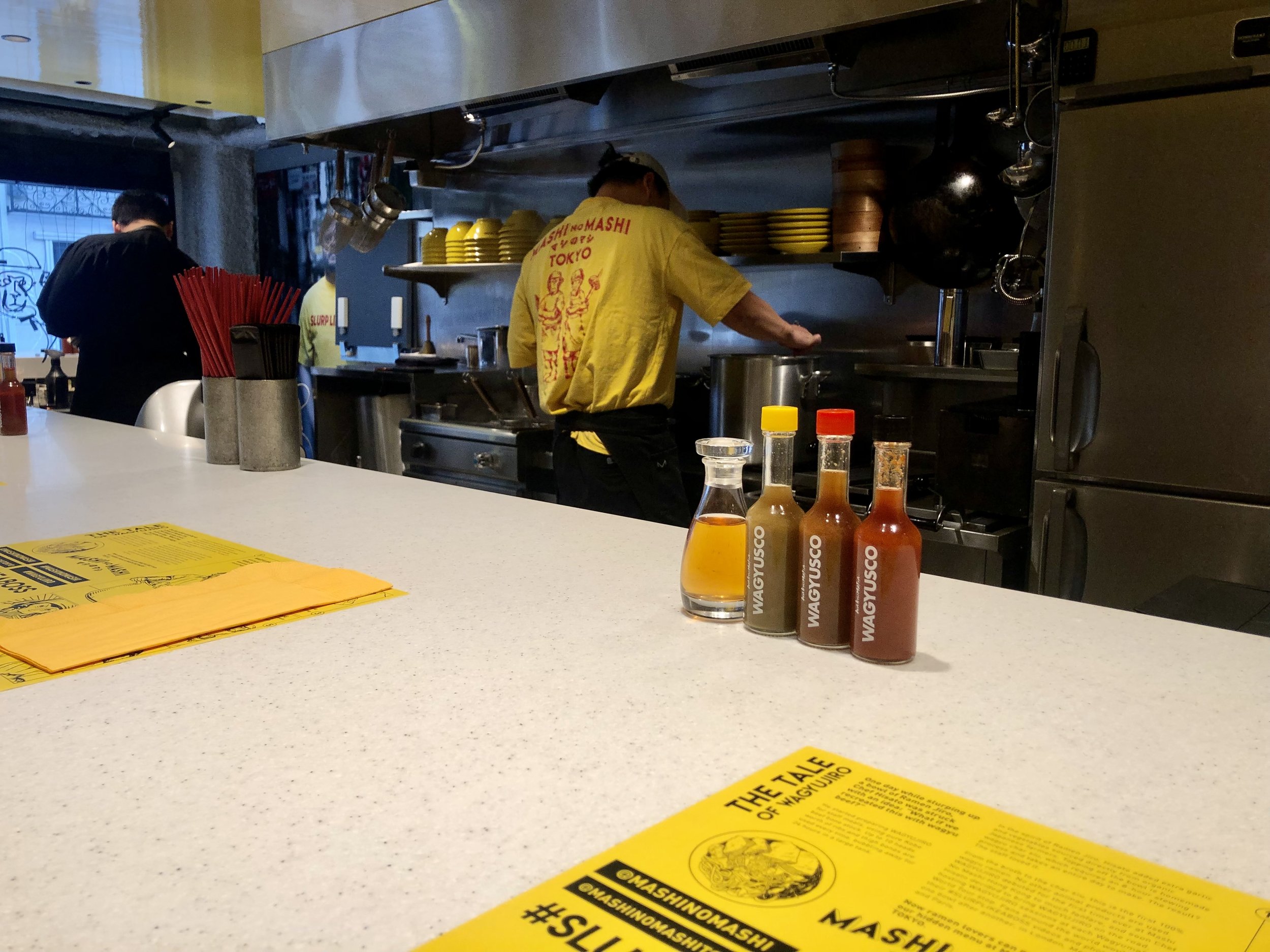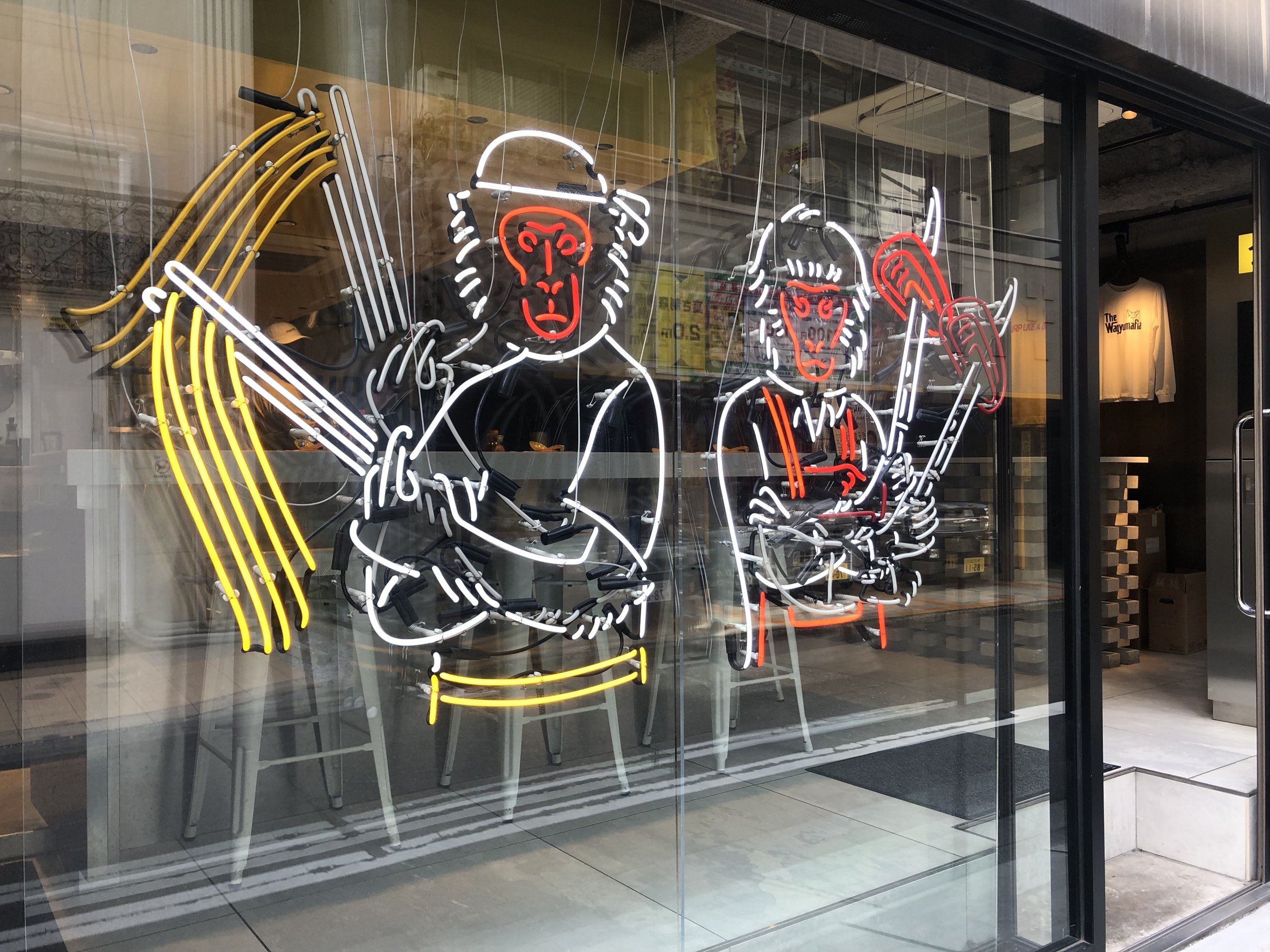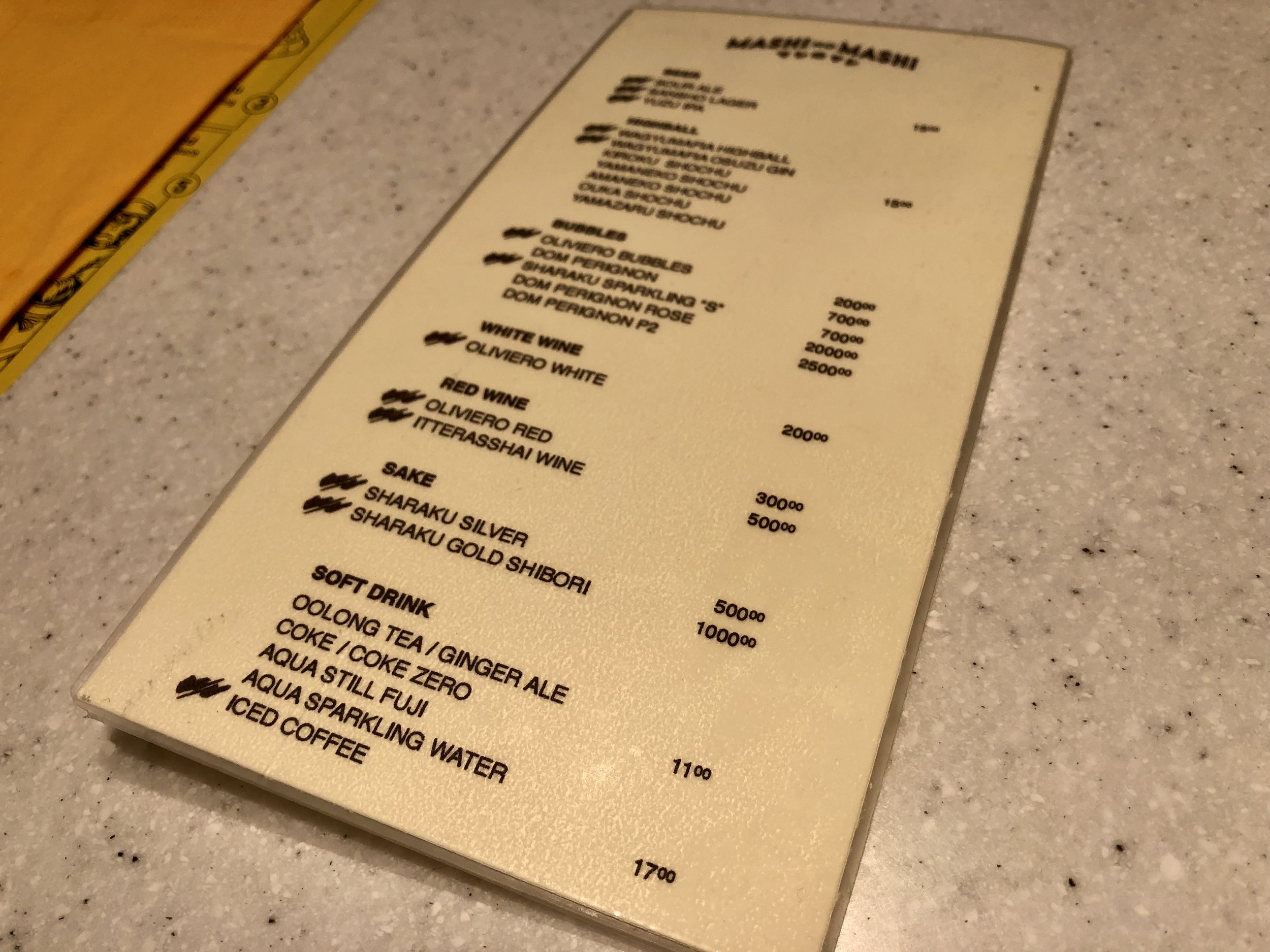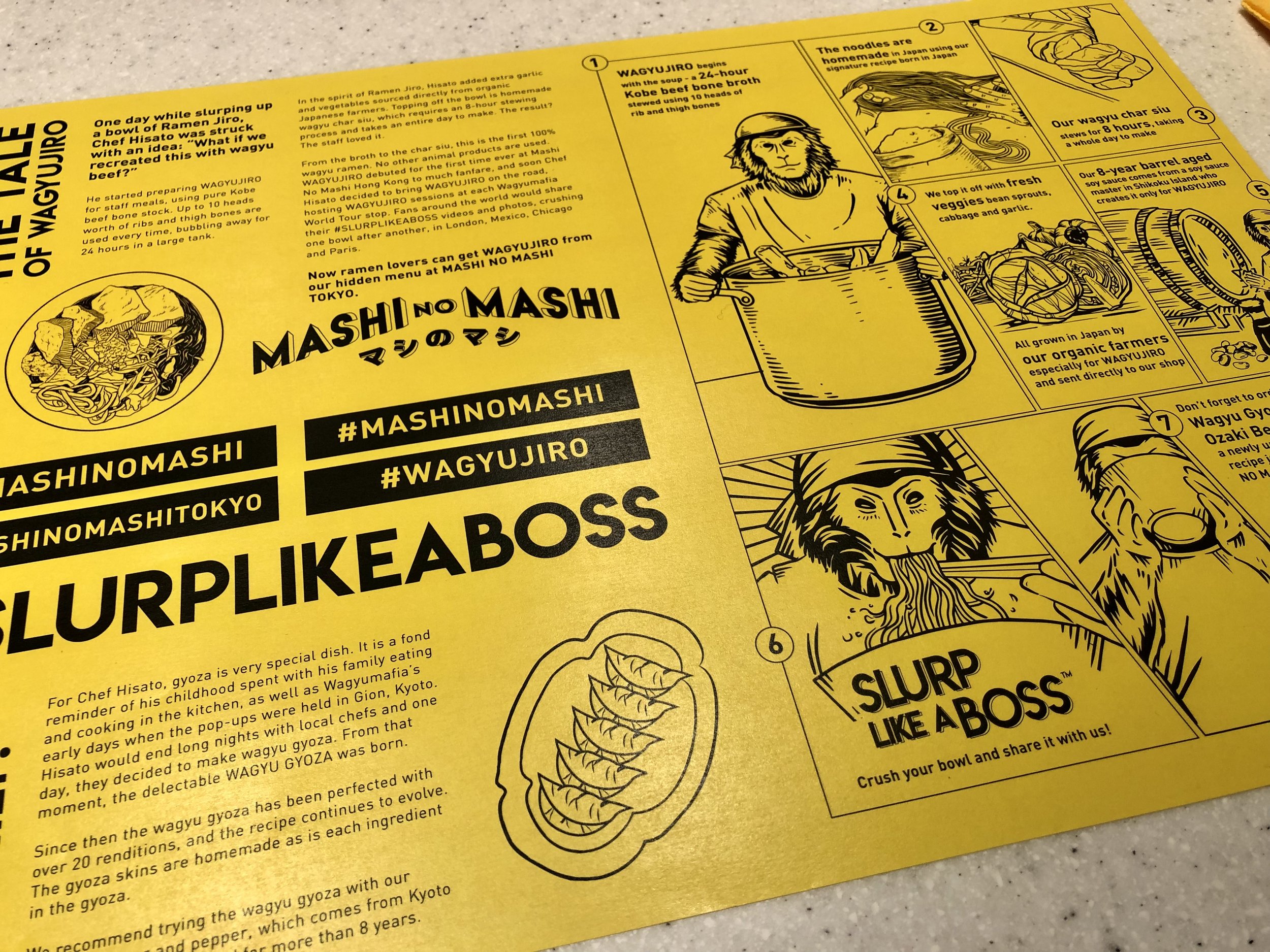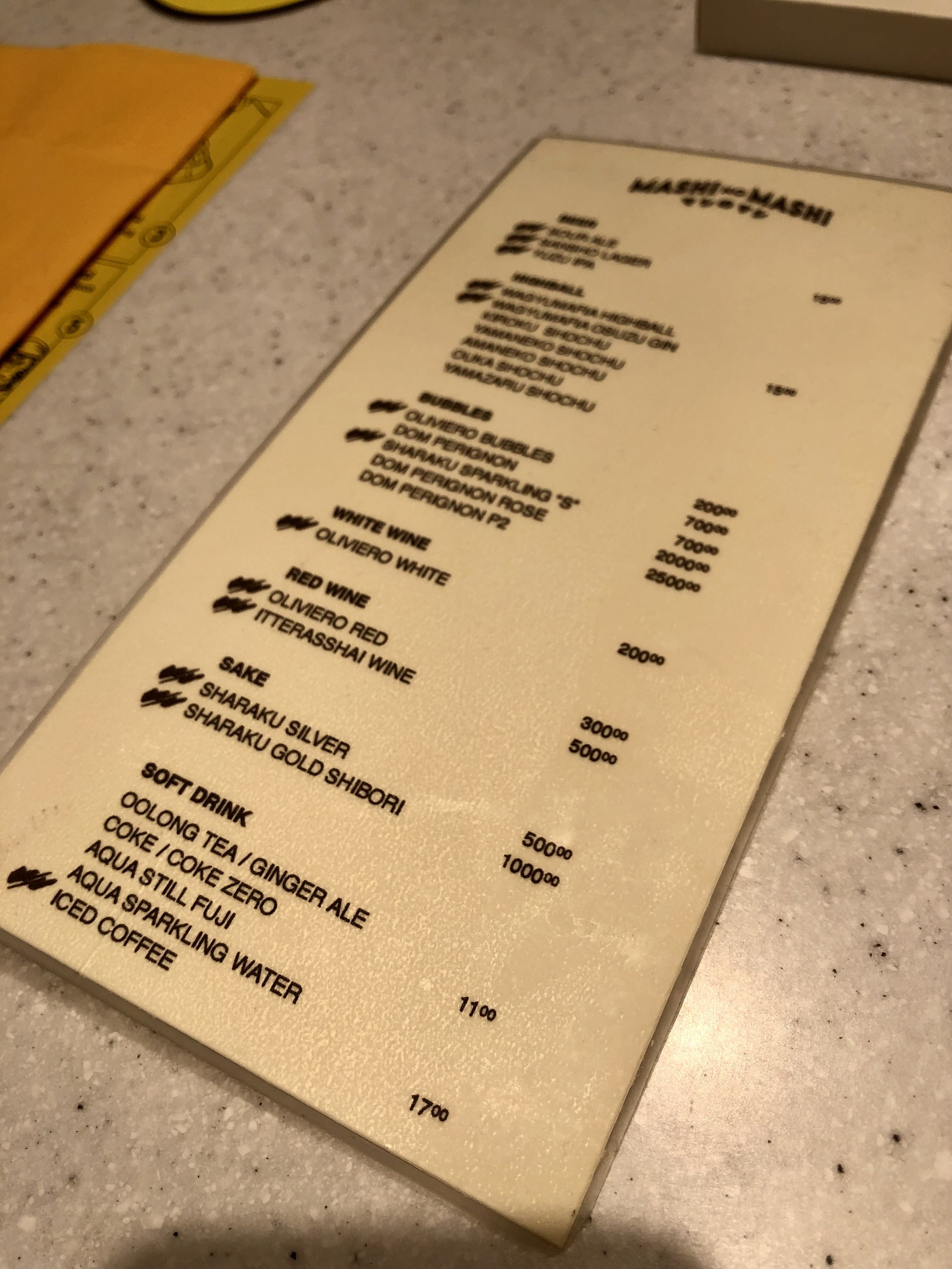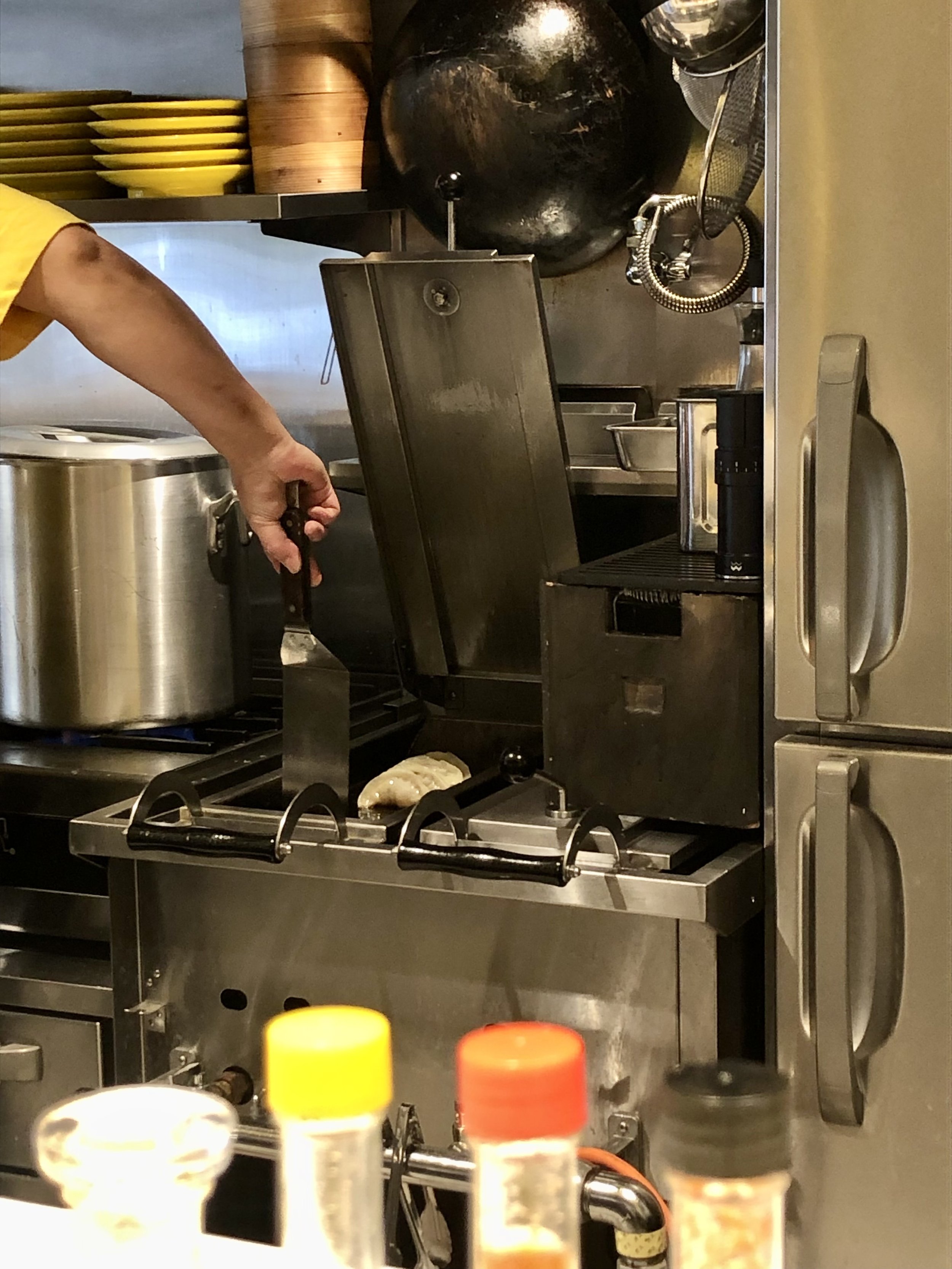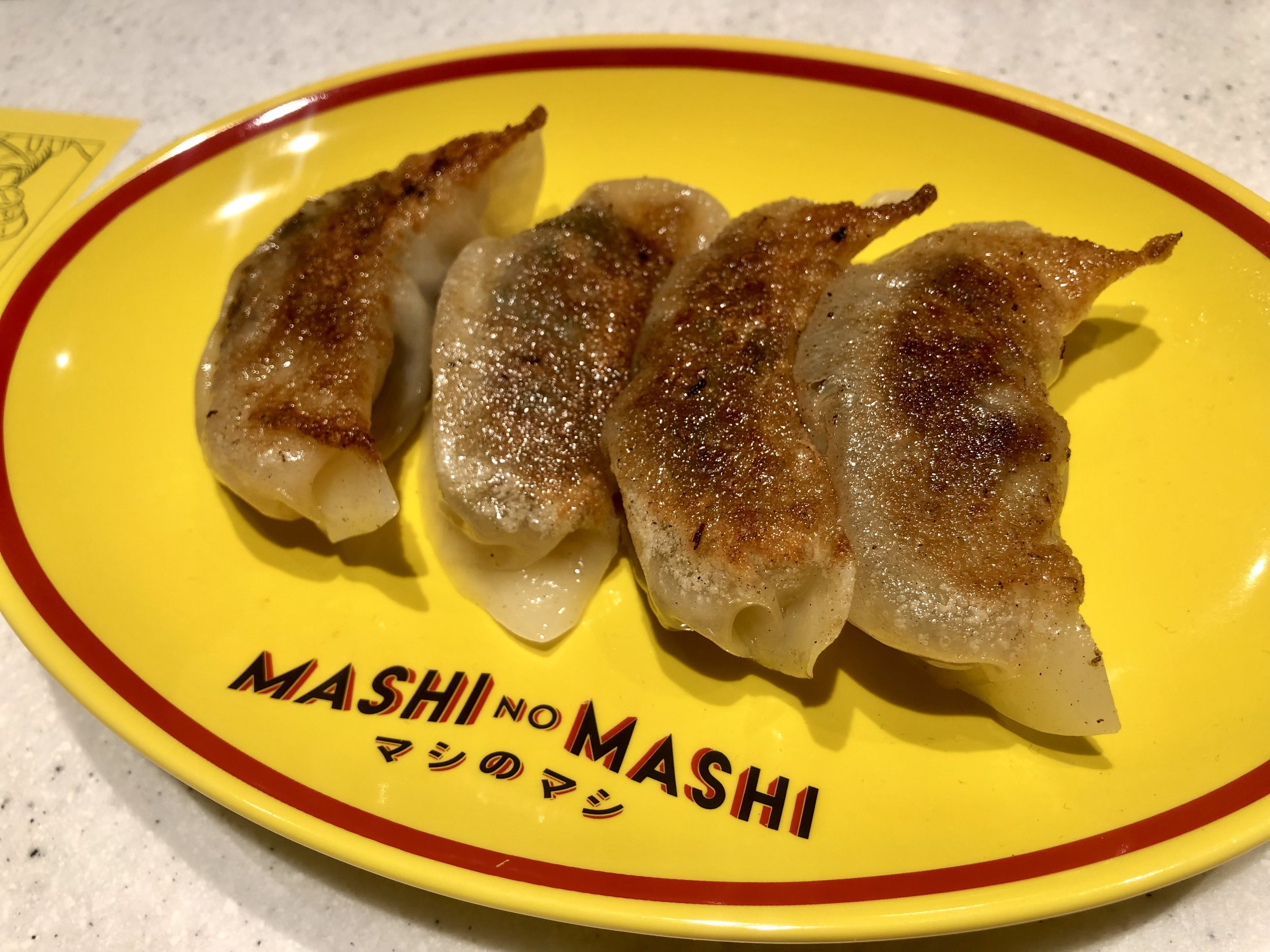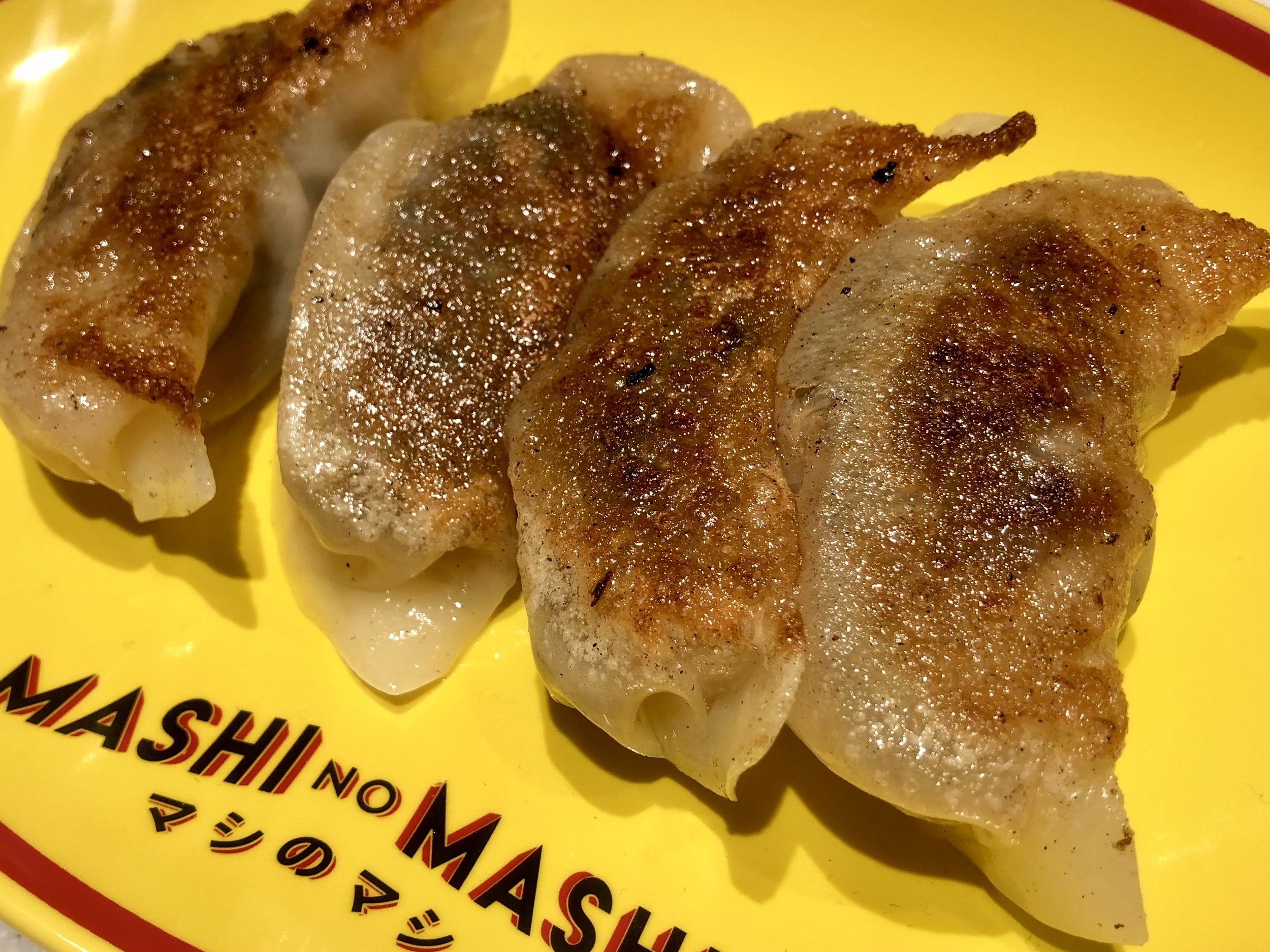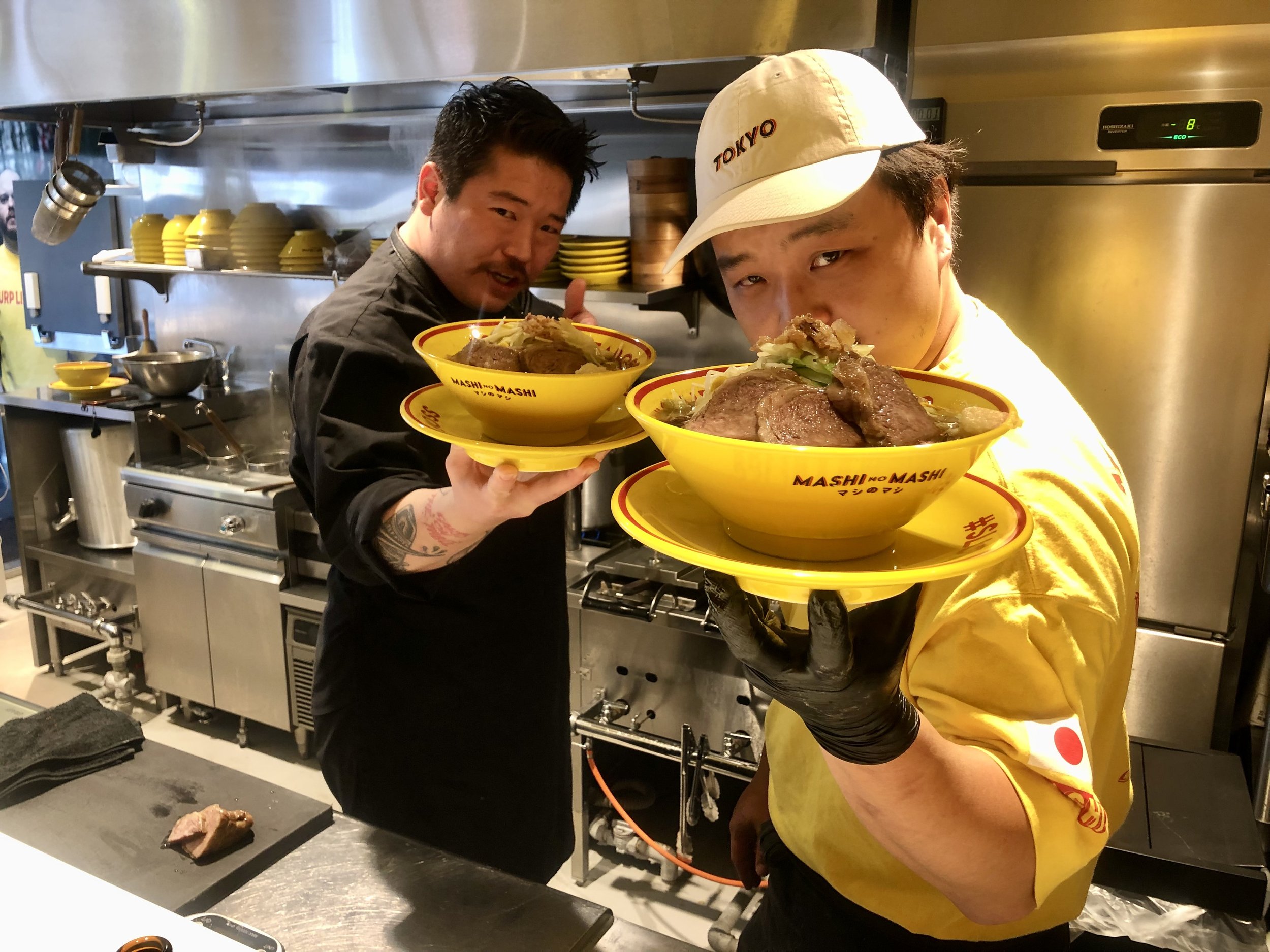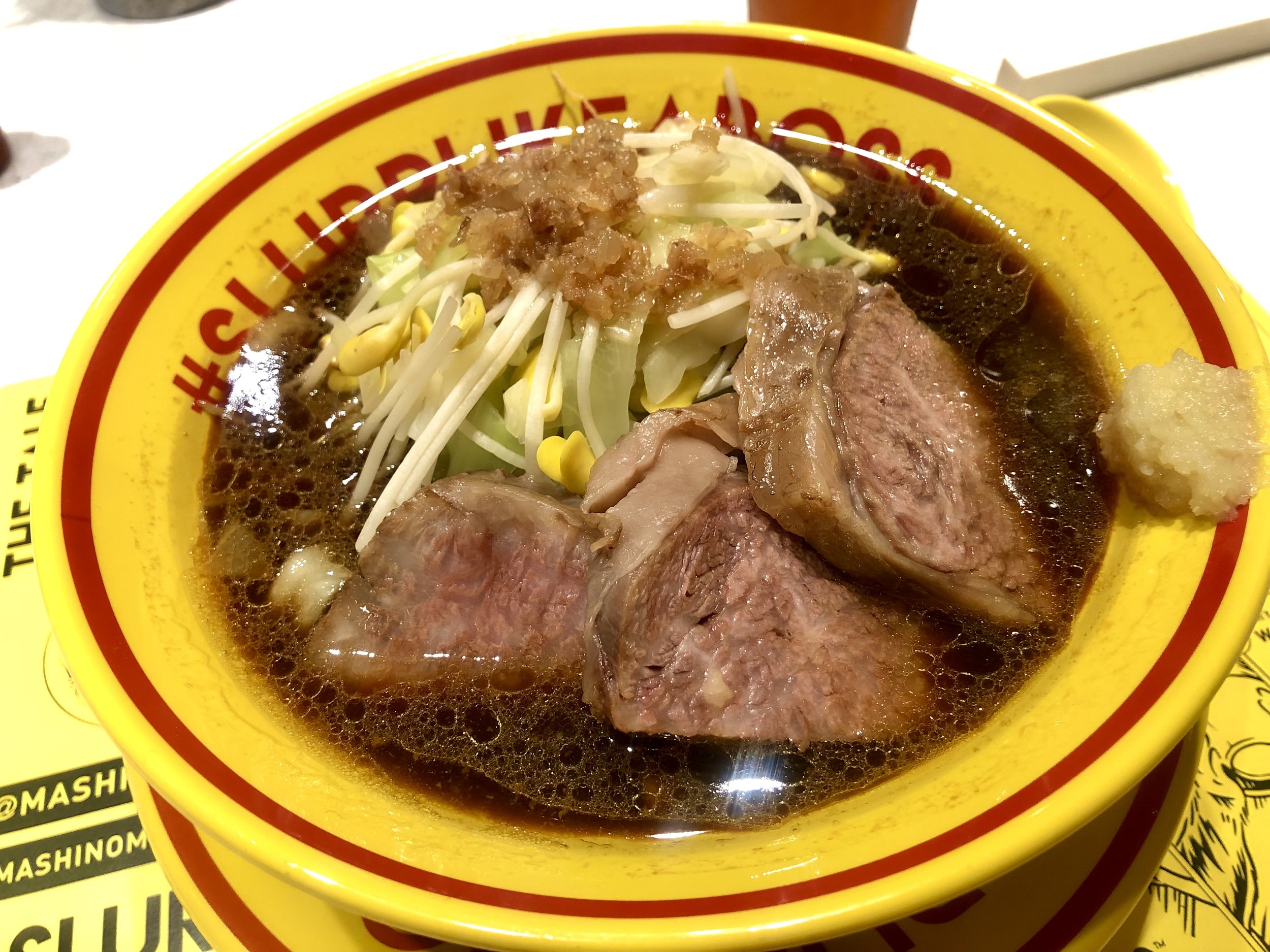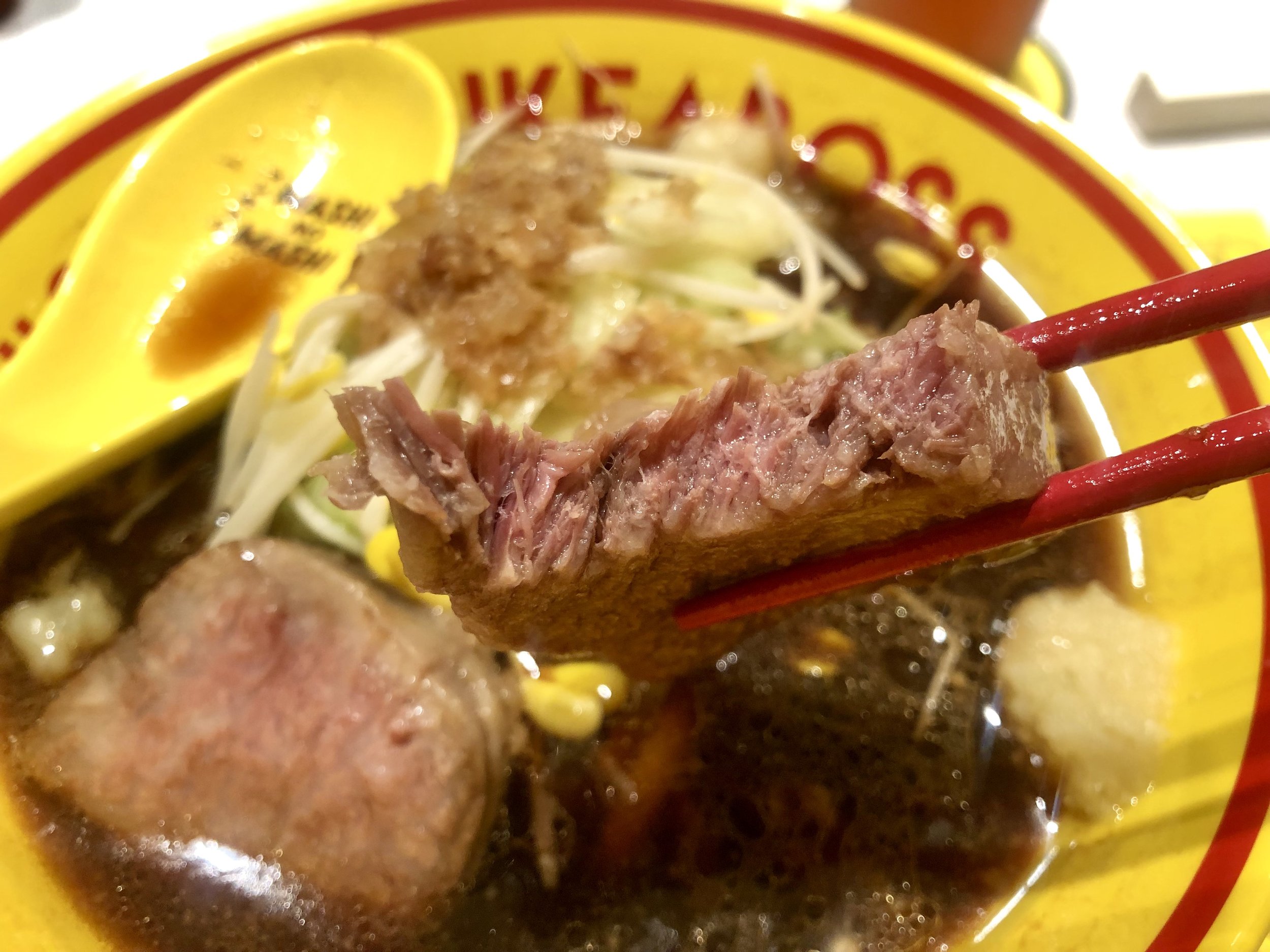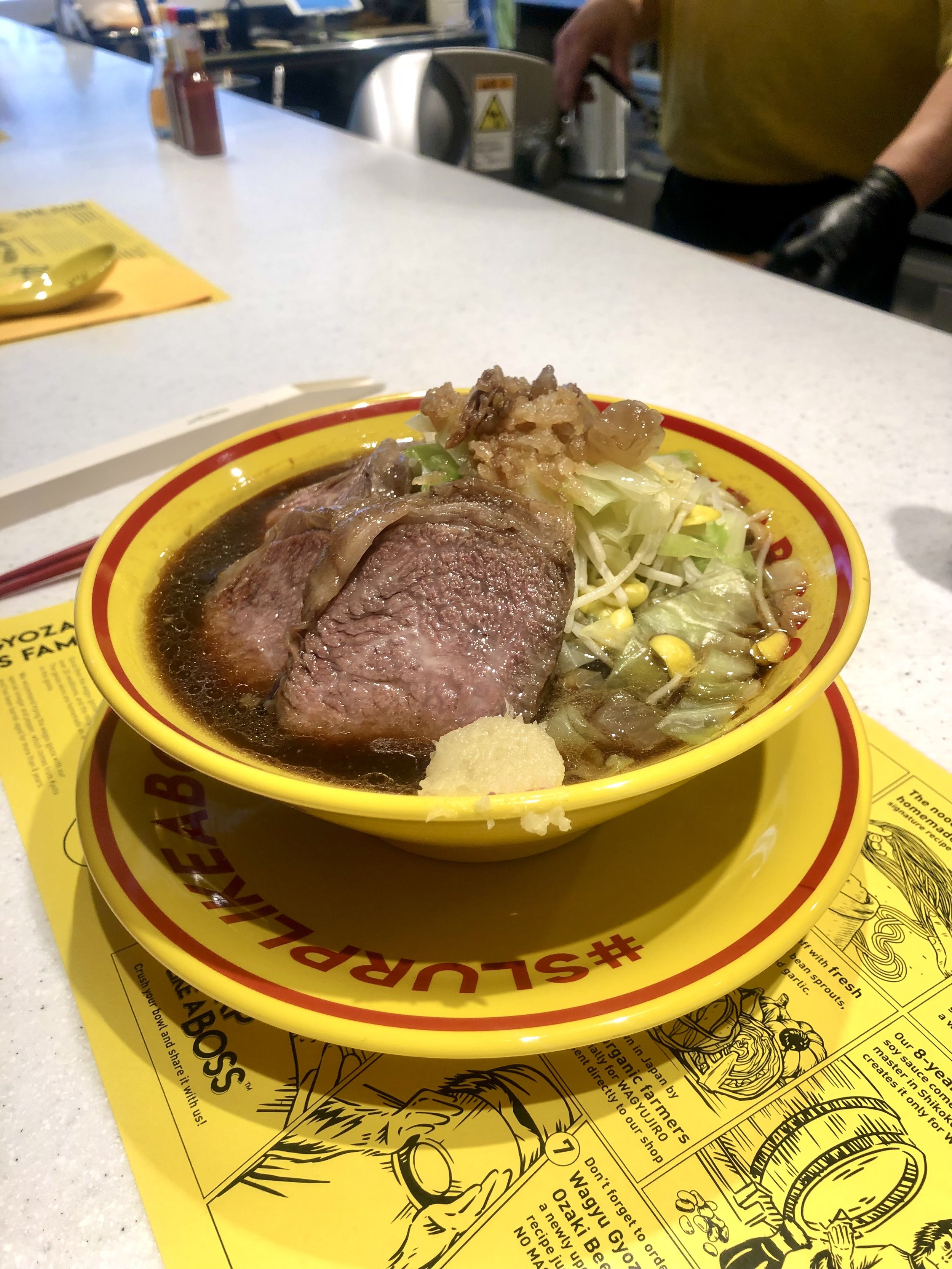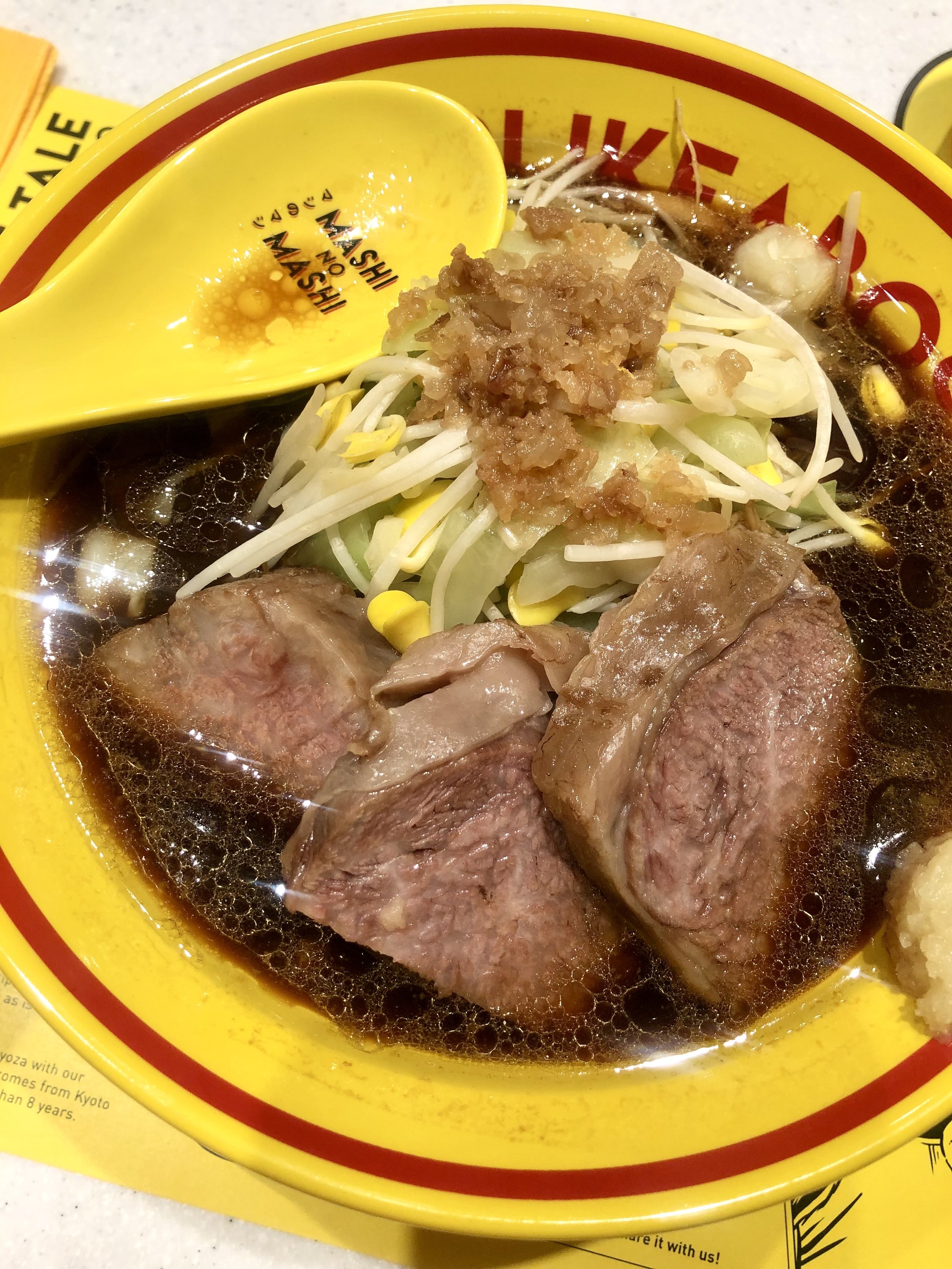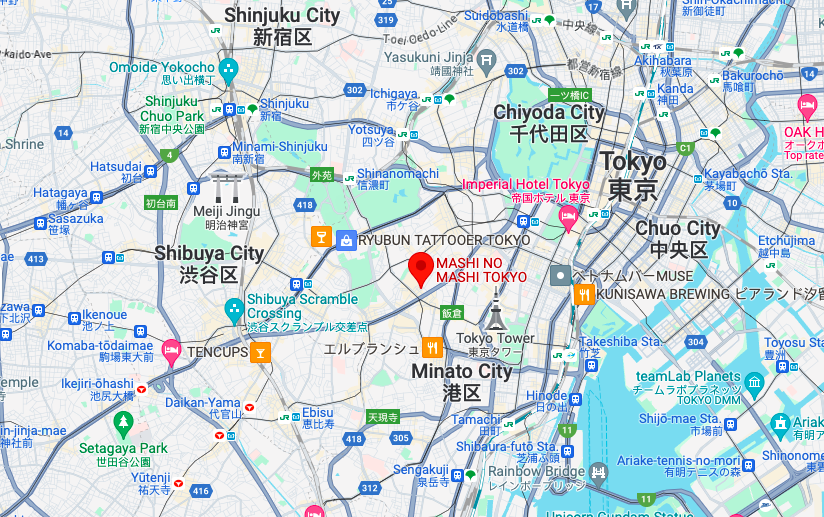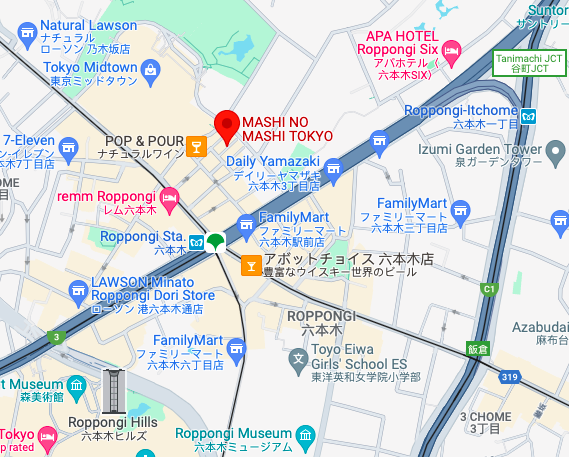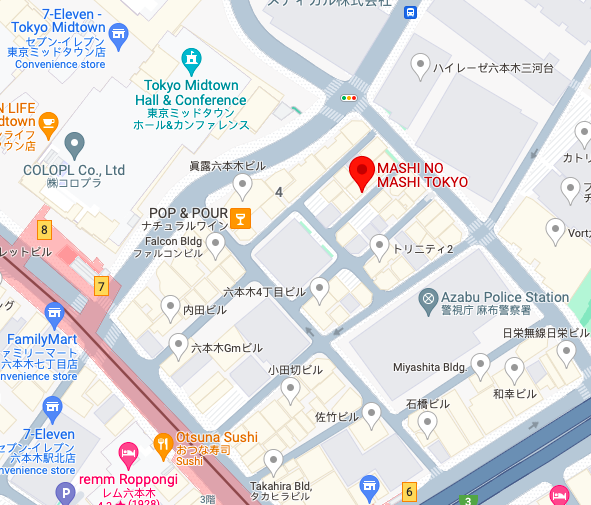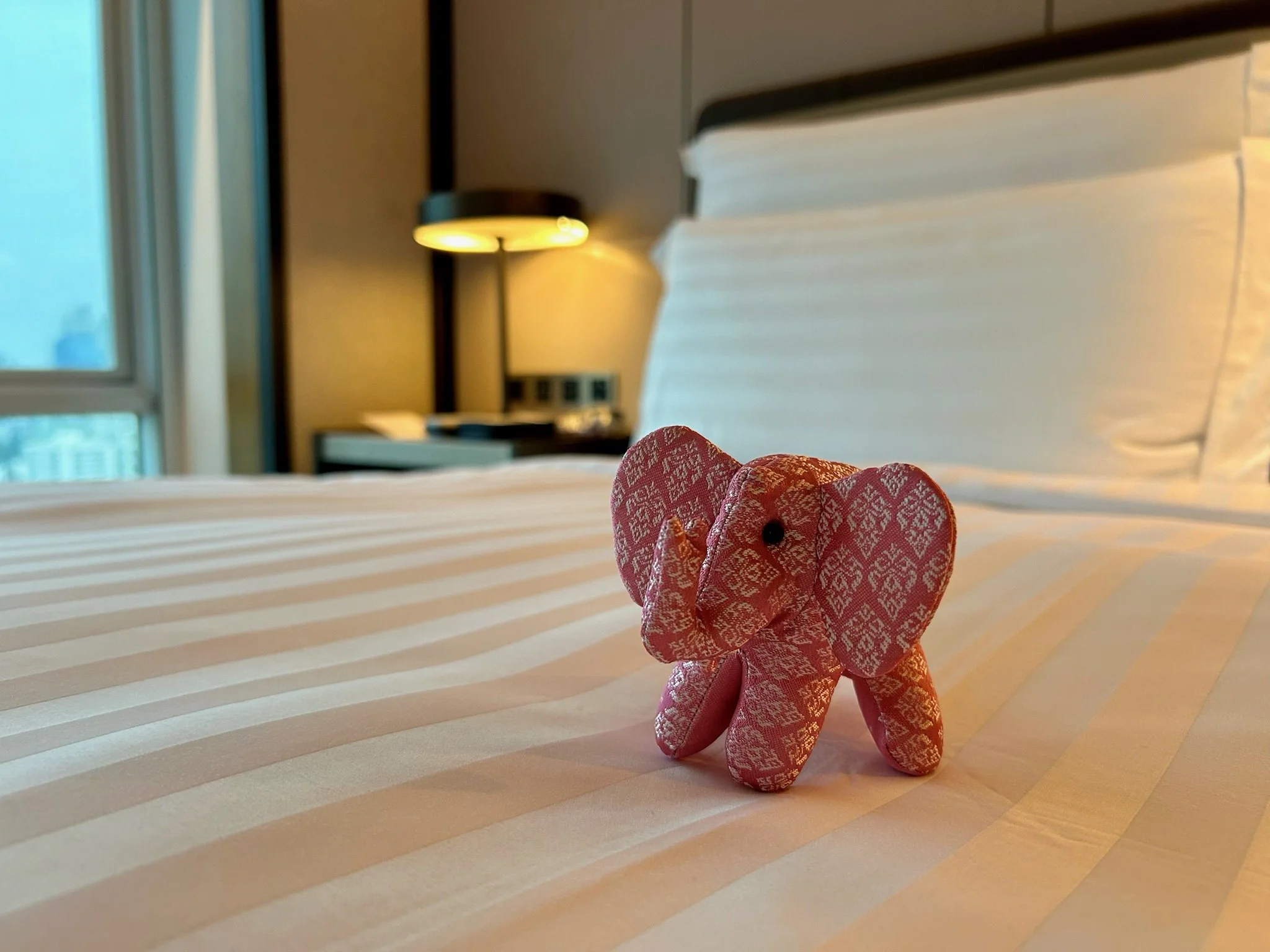Mashi No Mashi: Tokyo's $100 Ramen
This post contains affiliate links. For more information, please read our affiliate disclosure.
I remember when I was in college, a friend of mine had an internship in downtown LA. At lunchtime, his coworker asked if he wanted to get ramen at a nearby restaurant. He was so confused he felt the need to tell me the story later.
“Why would anyone pay $10 for ramen?” he asked, astonished.
It makes sense. In America, ramen is most famous for being what’s in Cup Noodles at the grocery store. There’s fancy ramen in Los Angeles, but most Americans have likely never had a genuine bowl of good ramen. They have no idea how delicious and varied it can be - and, more importantly, how satisfying it is on a cold winter day.
At this website, we don’t just go out for regular food. We go for stupid fancy and gigantic portions. That’s why we’re bypassing standard Japanese ramen and going for $100 ramen with wagyu beef. We’re like that.
Welcome to Mashi No Mashi
Nestled on a side street in Roppongi, a Tokyo neighborhood with plenty of unique fancy restaurants, Mashi No Mashi has its branding down. Aside from the cute primate images, they’ve got clothing hanging up with WAGYUJIRO and SLURP LIKE A BOSS everywhere. Ramen places in Japan are generally small, with a single counter, and that’s how Mashi No Mashi is, but with yellow decor and ‘90s music blaring (and American stand-up comedy in the bathroom so you can listen to Tom Papa while pooping).
The WAGYUJIRO - AKA the $100 ramen - must be booked and paid for in advance because it’s so complicated to make, so we had a reservation, but there was no one else there on Thursday at 12:30 p.m. There were two staff members, and we had them both to ourselves. They’re clearly leaning hard on the WAGYUJIRO because the placemats all had the WAGYUJIRO story on them.
The menu and WAGYUJIRO story
The restaurant has an extensive drink menu, though we don’t drink alcohol, so we stuck to the stuff at the bottom. For 1,700 yen (about $12), I tried a COJ Damn Good Coffee, which they told us is exclusive to their restaurant. It was good, but quite strong. Eriko had an iced tea, which was also pretty good.
But the main attraction here is WAGYUJIRO. The menu explains the intricate process of how this ramen is created and why it costs $100. They use 10 heads’ worth of Kobe rib and thigh bones and stir them for 24 hours to make the broth. Then they add 8-year barrel-aged soy sauce from a soy sauce master on Shikoku Island who makes it just for them. The noodles are handmade and the veggies all come from organic farmers who grow them special for this restaurant.
And then there’s the beef. Normally, ramen is made with char siu pork, but at Mashi No Mashi, they stew wagyu beef for 8 hours. It looked like they used some sort of sous vide method, as it was in a plastic wrap - or maybe they stew it the day before and wrap it up, I don’t know I’m not a chef. It was fun to watch the process of how the ramen was constructed, basically a show put on all for us.
All these fancy ingredients together make for a completely unique bowl of ramen you can only get here. But that’s not the only thing you can try that you won’t get anywhere else.
Ozaki beef gyoza
It’s important to have a partner who thinks the same way you do. Marriage is a long and complicated enterprise, and disagreements can cause strife. Sometimes I worry how my wife will react to certain things. For instance, after I’ve spent $200 to reserve a ramen lunch, and I think I’d also like to pay $20 for some fancy dumplings to go with it, I worry she will think that’s a needless waste of money and that I’m a total pig. I thought for days about how to suggest doing this without being branded a big fat piggy boy.
How nice it was, then, the day before our visit to Mashi No Mashi, to hear Eriko say, “Gyoza looks good too. We should try.” My wife wanted to be a piggy too. We are piggies together.
Gyoza is also normally made with pork, but this kind is made with Ozaki beef. They’re not premade, so we got to watch him form them by hand and fry them up just for us. Normally 2,000 yen gets you three pieces, definitely expensive for gyoza but cheap compared to the ramen. But since there were two of us, they gave us four pieces so we could each have two. Very nice of them.
The gyoza was as sweaty as it looks in those pictures, but not greasy and the wrappers didn’t break. It was… transcendent. The beef had such deep flavor it transported us to a new world in which all humans were named Beef and everything was made of beef and my eyeballs were beef. I honestly couldn’t believe it. Best gyoza I’d ever had by a mile.
They supply vinegar and pepper and a couple of hot sauces, including one made with Carolina Reaper. I don’t usually go for hot sauce these days because my tum-tum has become extraordinarily sensitive in my advanced age, but I wanted to try it, so I put one drop of the Carolina Reaper on my gyoza and OH MY BURBLES MY MOUTH ON FIRE. The gyoza is so juicy that it doesn’t require hot sauce, but the sauce was really good.
Now that we’d enjoyed that, it was time for the main course. Was WAGYUJIRO just a gimmick, or could it live up to the hype?
WAGYUJIRO, the $100 bowl of ramen
First off, this bowl is massive. They normally put 150 grams of noodles in it, but gave Eriko the option to order only 100 grams, which was the right amount for her. It’s a big bowl for a special day, not your average everyday bowl of ramen.
Also, while it’s known as the $100 bowl of ramen, it actually costs 11,000 yen, and thanks to the current exchange rate, that’s only $75. We got a bargain.
First thing I tried was the broth. I wondered if it would taste salty, fatty, beefy, weefy, shmeefy… but it was none of those things. It was just… smooth. That’s the only way I can describe it. One would think the Kobe bones and wagyu beef would add too much fat too it, but the exact right amount of that special soy sauce evened it out perfectly. It was entirely unique, and I kept going back to it, trying to pin down what I was tasting, but an easy answer eluded me every time.
Then there’s the beef. The stewed cooking method and the fact that it was sitting in the broth meant the texture was a but mushy and slimy, but after letting a bite of it sit in my mouth for a few seconds, it was obvious I was eating Wagyu beef (after taking a bite, I decided to capitalize Wagyu to show proper respect to this deliciousness). The fat content added a depth of flavor that required savoring each morsel for as long as possible.
“This is steak!” exclaimed Eriko. It was definitely quality beef.
That’s the thing about this ramen: everything was of that quality. The noodles, the veggies and bean sprouts, the garlic and little bits on top - every element was of the highest quality that I’d ever had in a bowl of ramen. Normally ramen delivers a single taste based on the broth and everything else complements that, but in this case, each of these things was special on its own, coming together in an incredible marriage. I found myself astonished throughout the entire meal.
Not to brag, but I finished that whole bowl of ramen, plus the final bite of Eriko’s beef. Toward the end, the broth became a little too dense and I was a little too full, so I was ready for naptime. Eriko couldn’t finish all her broth, so she just picked the last few bits out of it and we went on our merry way. The staff was super nice and its was a great experience. But was it worth a total of 27,000 yen?
Verdict: is Mashi No Mashi worth it?
I’d say you should absolutely visit Mashi No Mashi. The ramen is superb and a unique experience that we were happy to fork over the money for. If you don’t have the time, the money, or the fixed schedule to book the WAGYUJIRO in advance, just go and try the gyoza. Honestly, for the price of the WAGYUJIRO, you could get 15 of those gyoza, which are absolutely incredible.
I worry a little about Mashi No Mashi’s staying power. They weren’t super busy, and it seems they may be leaning too hard on the uniqueness of their expensive ramen. If they advertised other menu items, it might be easier to get a normal clientele along with people like us looking for a blog-worth experience.
But if you’re visiting Tokyo on vacation and want the ultimate ramen to brag to your friends back home about, this is absolutely it. And even if you live here, Mashi No Mashi is worth taking a special trip for. We went on the day after Valentine’s Day, so I considered this to be my Valentine’s Day gift. Treat your loved one to Wagyu ramen and dumplings. They’ll thank you for it.
Location and info
Mashi No Mashi
Address: 〒106-0032 Tokyo, Minato City, Roppongi, 4 Chome−5−11 SIX 1F
Website: Mashi No Mashi
Instagram: Mashi No Mashi Tokyo
Note that there are also locations in Sydney and Hong Kong, so make sure you go to the website for the right one to make your reservation!



